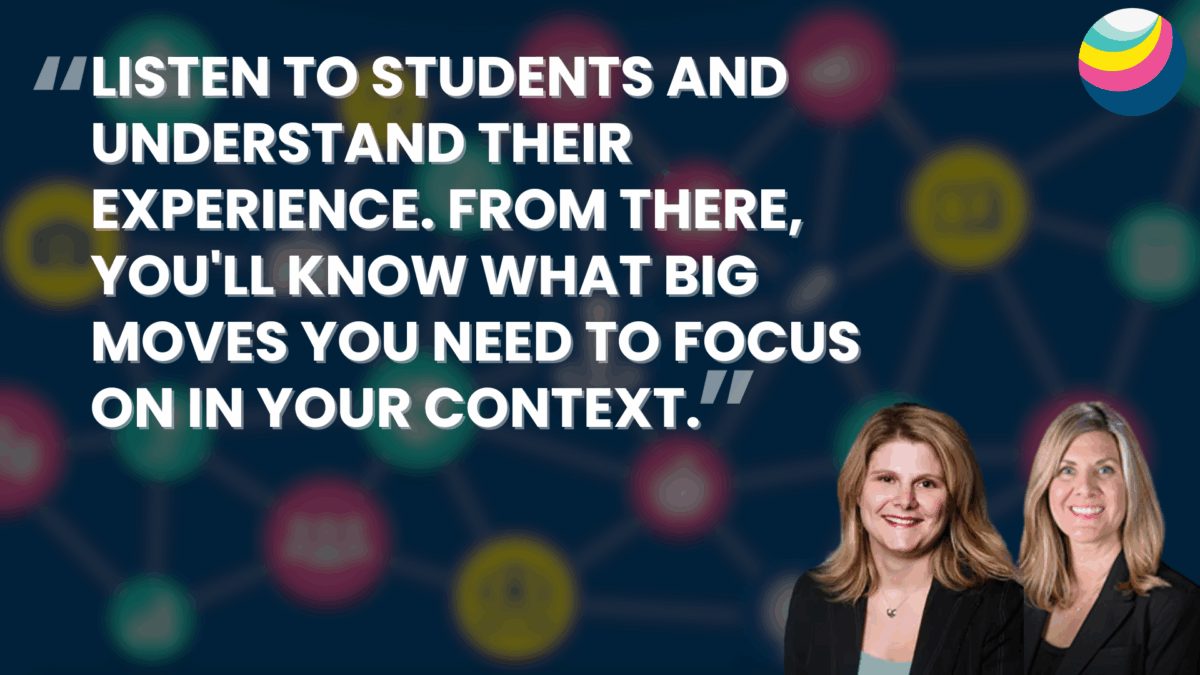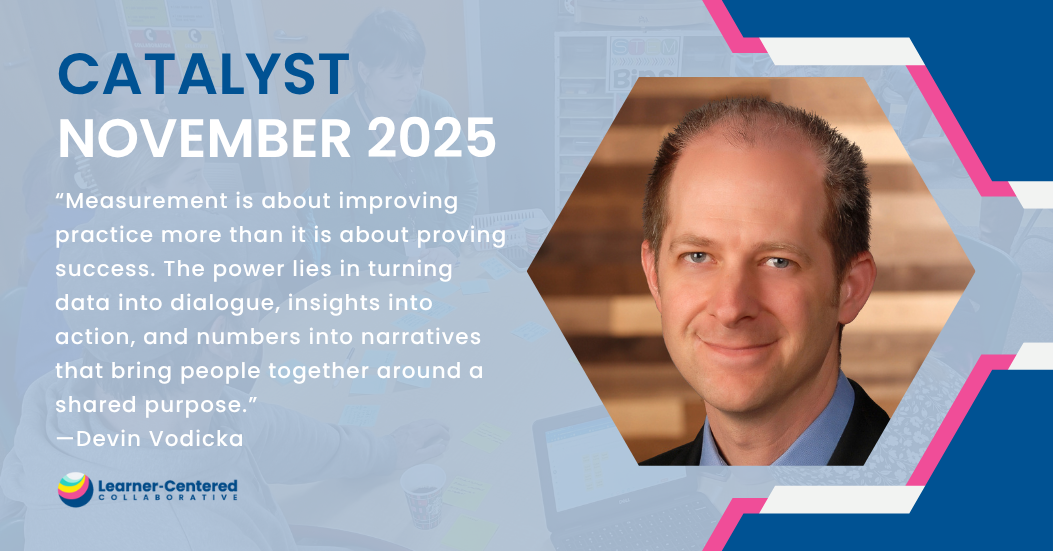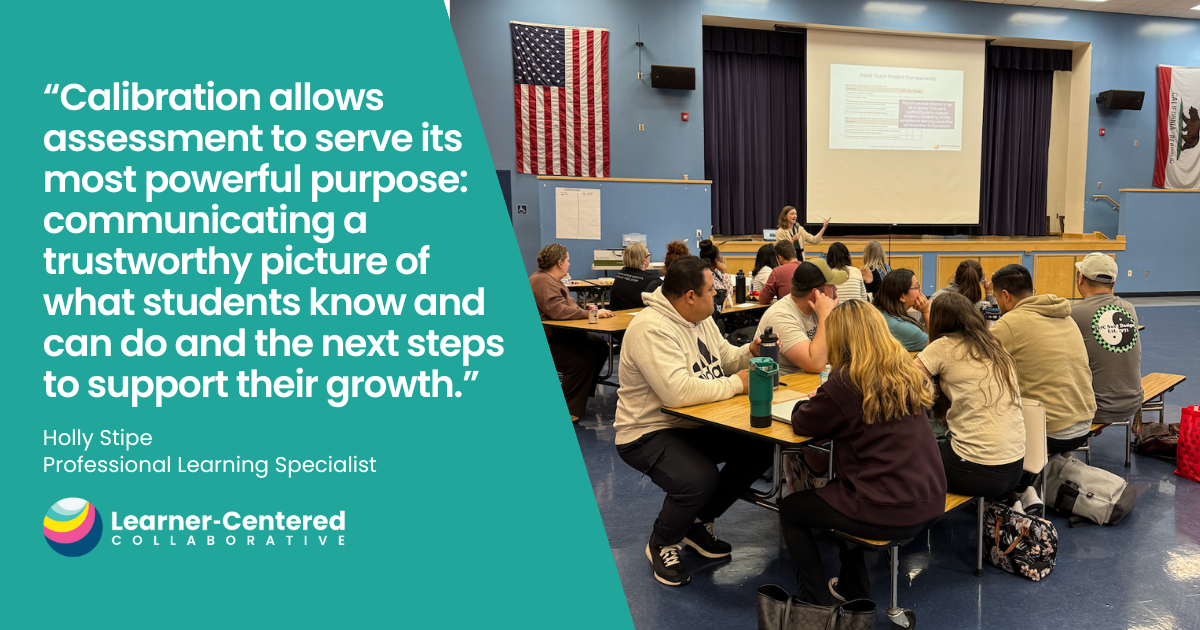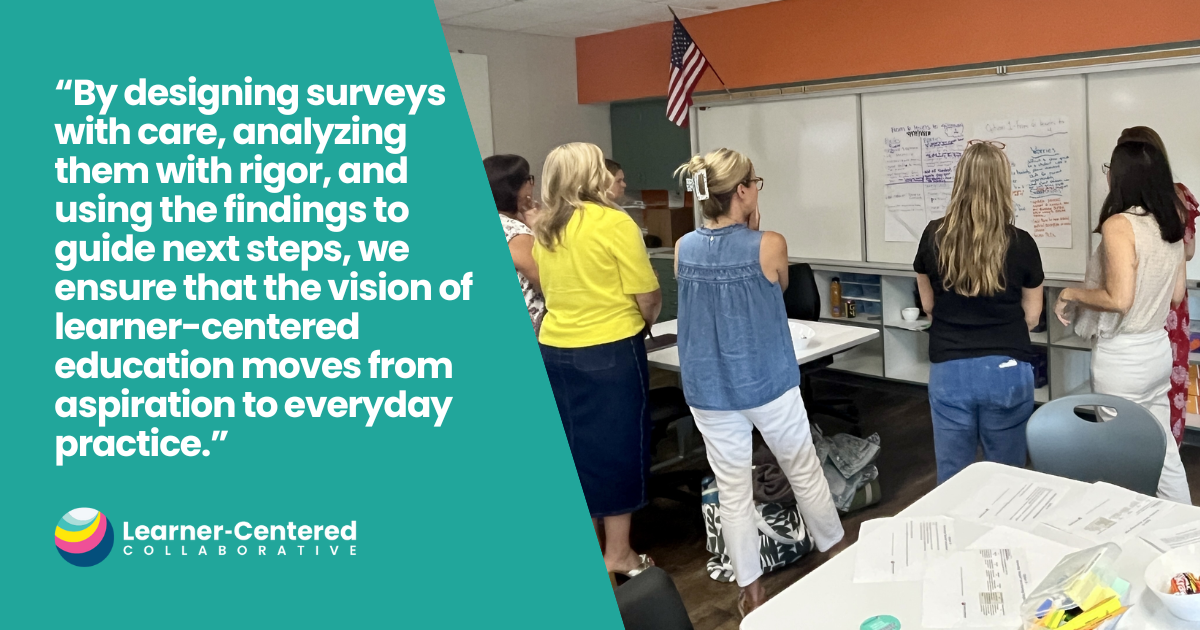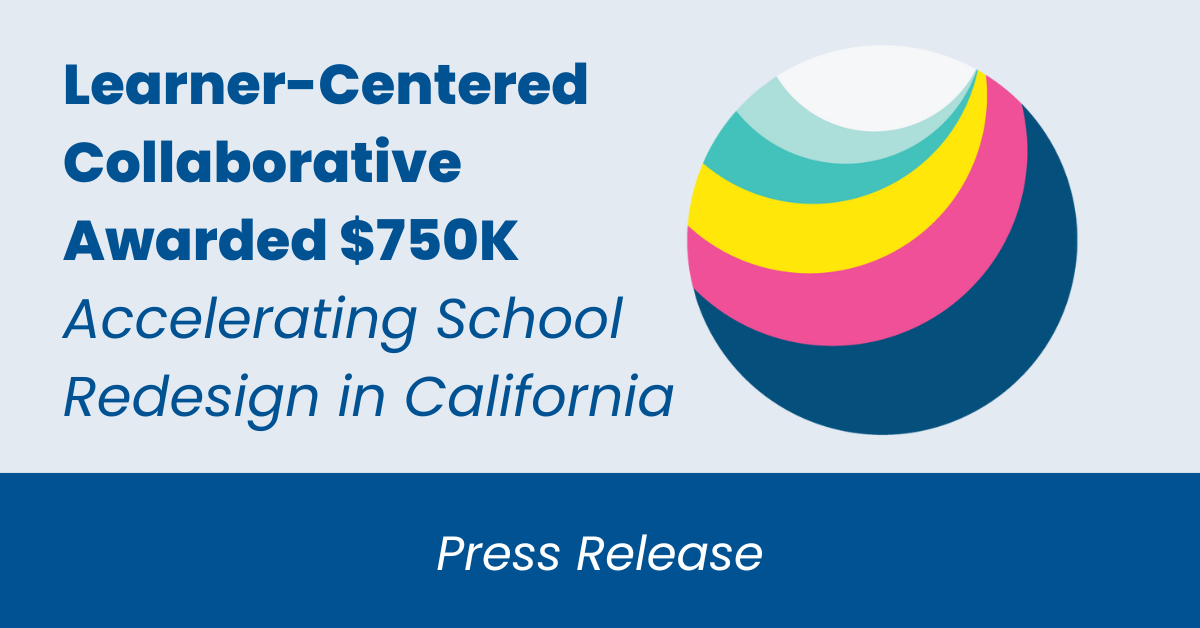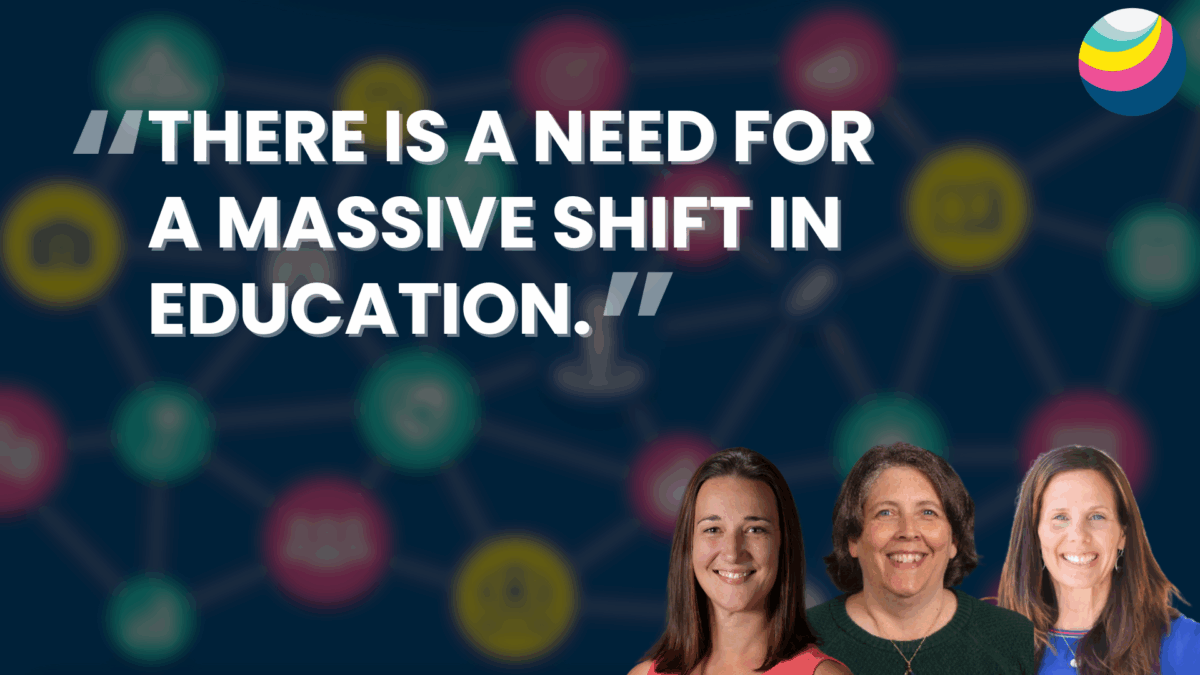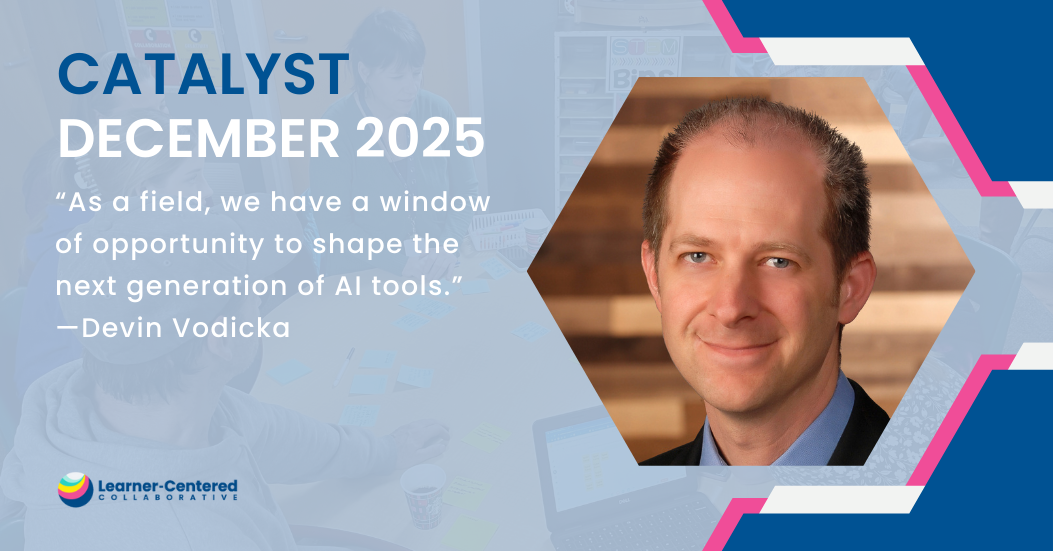Can Regional Innovation Hubs Create a More Promising Future for K-12 Education?
Written in collaboration with leaders from AERDF, ALI, InnovateEDU, Leanlab Education, and Learner-Centered Collaborative
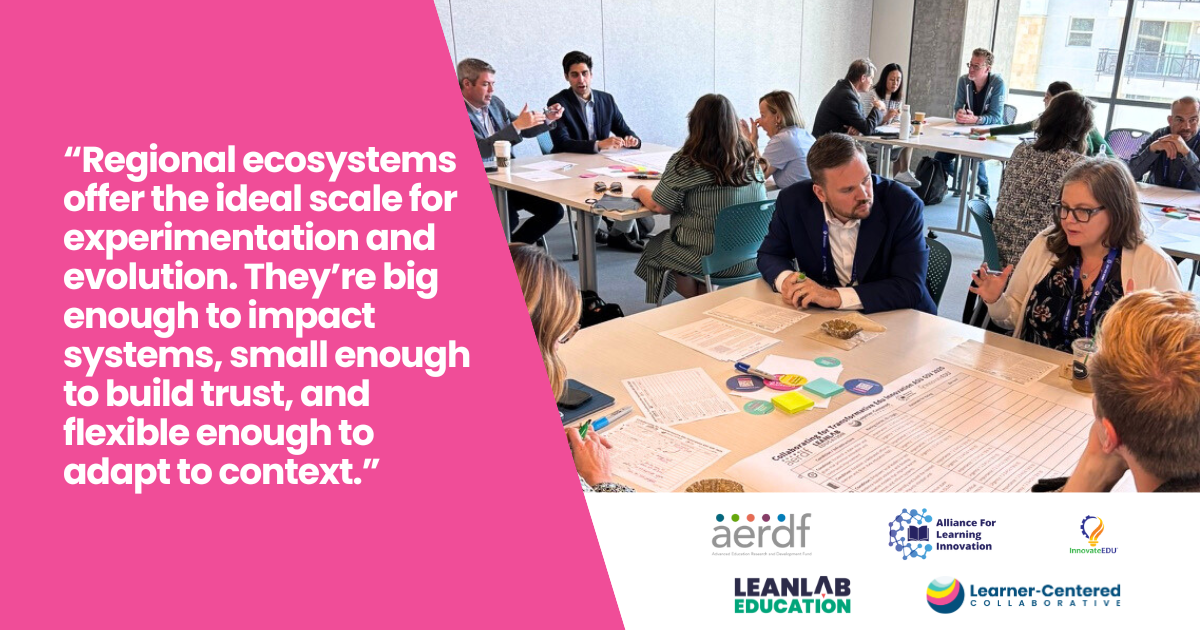
Throughout history, moments have invited us to rethink how learning happens, who it serves, and what it could become. And yet, many of these opportunities have come and gone without the lasting change they promised.
The COVID-19 pandemic is one such moment. It revealed long-standing inequities, catalyzed fresh thinking, and sparked a desire for new approaches from education leaders and entire communities. Five years later, it’s fair to say that turning the desire for a more learner-centric model into a reality anchored in practice was uneven and sparse. But innovation and transformation did happen.
A new brief, Seizing the Opportunity for State Education R&D: Findings and Recommendations for Action, by Education Reimagined and Transcend, in partnership with the Alliance for Learning Innovation (ALI), describes some examples.
Each example showcases a universal truth: a specific set of underlying conditions and infrastructure for learner-centered change had to be in place for success. Those conditions and infrastructure provide a promising blueprint for reimagining learning and innovation in today’s educational environment.
Evaluating the Conditions and Infrastructure That Matter Most
As we ride another wave of uncertainty across the educational landscape—the expiration of COVID-19 relief funds and shrinking public school district budgets, cuts to federally funded research initiatives, and opportunities and challenges around AI integration—we need to understand where, when, and how to create systems that support and sustain learner-centered change no matter what comes next.

In April, five education innovation organizations—Learner-Centered Collaborative (LCC), Advanced Education Research and Development Fund (AERDF), Leanlab Education, InnovateEDU, and the Alliance for Learning Innovation (ALI)—convened a national group of 20+ leaders at ASU+GSV in San Diego to discuss the potential and promise of regional innovation hubs to prepare every community for the unexpected.
Regional innovation hubs are collaborative ecosystems defined by citywide, statewide, or multi-state collaboration that bring together local educators, researchers, technologists, and community leaders. These hubs provide a collaborative learning, experimentation, and progress framework that aligns with each community’s unique needs and strengths.
Using the eight recommendations from the Seizing the Opportunity for State Education R&D brief as a conversation starter, participants assessed the importance and urgency of each one as it relates to the development of these regional hubs:
Recommended Condition or Infrastructure | Participant Notes |
| Condition: Establish a state vision and goals that prioritize innovation and continuous improvement. | “If you don’t know where you’re going, you won’t get there.” |
| Condition: Establish a dedicated office to oversee and drive state education R&D. | “There are different models. This could be one, but there are tradeoffs.” “Some capacity is needed, but not necessarily this solution.” |
| Condition: Empower local leaders to test evidence-based solutions and develop innovative models that improve learner experiences and inform systems. | “Locally-embedded solutions are needed to demonstrate possibility.” “This has to be rooted in community for the best ideas to come forth and for the work to be sustainable.” |
| Condition: Identify and build the needed capacity that impacts mindset and behavior change. | “Mindsets are a necessary starting place.” “Focus on individuals as close to students as possible.” |
| Infrastructure: Modernize state longitudinal data systems (SLDS) | “This can occur once the vision is clear and the ecosystem has modeled a data system.” “It depends on the current system in place, especially given federal pullback.” |
| Infrastructure: Leverage tools, artificial intelligence, and technology platforms to support and enable education R&D. | “Necessary for today’s world and for the future.” “Needs to be aligned to the vision and connected to local leaders.” |
| Infrastructure: Build human capacity through partnerships, networks, and community engagement. | “Creates capacity, connectedness, and momentum.” “Having networks across contexts supports local innovations and policy implementation.” |
| Infrastructure: Provide technical support for R&D activities and continuous improvement. | “Tech support is valuable, and partnerships with expert organizations are important.” |
Why Regional? Why Now?
The shape and scope of federal funding in education are evolving, including a potential shift toward regionally focused investments in research and innovation. With that shift comes an important question: Are communities equipped to lead?
We believe they can be.
Regional ecosystems offer the ideal scale for experimentation and evolution. They’re big enough to impact systems, small enough to build trust, and flexible enough to adapt to context. In short, regional hubs are where vision meets action.

Promising examples of regional education innovation hubs exist. In Missouri, 114 school districts collaborate via the Success-Ready Students Network to redesign assessments aligned with competency-based, real-world learning.
In Columbus, Ohio, a brand new initiative launched in 2024 called the Columbus Learning Ecosystem Initiative—”A tight partnership of the STEM visionary PAST Foundation, learner-centered leader 100 Roads, and Education Reimagined.” This initiative was originally born from a need to address the city’s fast population growth and increase the availability of skilled workers. As a result, they came up with the following solution:
In North Carolina, South Carolina, and Georgia, they have formed the Ed-Tech Collaboratory—an initiative focused on enhancing operational efficiency for education agencies and improving student outcomes through the use of common data strategies, infrastructure, and modern software solutions. This collaboratory endeavors to create and maintain replicable models for state data systems, aiming to make education more responsive, adaptable, and student-focused for the future.
Looking at the backstory of each initiative, specifically when and why each began, we might note there is always a moment to reimagine our systems and structures so that every learner is fully seen, supported, and empowered. That moment is here and now in all our communities, so let’s explore how we might respond and rethink how we do school.
What We Need to Build
Several cross-cutting elements should guide the creation and scaling of regional hubs. Below are insights gathered both in our April conversation at ASU+GSV and in the Seizing the Opportunity for State Education R&D brief:
- State-Level Advocacy: States can act as important allies—advocating for enabling policies, aligning data systems, and ensuring coherence in service of grassroots or district-level innovation.
- Capacity Building: Regional hubs must invest in developing people who do the work and shape it, not just in programs. This means supporting educators, community leaders, and learners themselves.
- Collaborative Ecosystems: Innovation doesn’t thrive in silos. Successful hubs will be those that foster deep partnerships across sectors and roles.
- Data & Infrastructure: To learn what works and scale what matters, robust systems for measurement and evidence generation, actionable feedback, and iteration are essential.
- Communication & Amplification: Moving fast and sharing broadly will be critical to building momentum across regions and fueling a national movement.
- Authenticity & Purpose: Amidst the complexity, the work must stay grounded in what matters most: the humanity of learners, educators, and communities.
What Comes Next
Building regional hubs is not a one-size-fits-all endeavor. Each hub must reflect its local context’s needs, assets, and aspirations. Some may emerge within a single district, others may form through statewide coalitions, and others may span geographic or thematic boundaries.
What matters most is that the work begins, that leaders, educators, researchers, and communities come together around a shared purpose, and that we work together to build ecosystems from the ground up.
This work is just beginning. And you can be part of it!
We are continuing this conversation in person at ISTELive 25 in San Antonio, TX. If you plan on attending and would like to know more details about our regional innovation hubs conversation, please email us here. If you are not attending, but would like to be involved in future conversations or simply receive updates about the work, submit your information here.
Together, we can co-create a future where education innovation is local, change is lasting, and every learner is seen, heard, and empowered.
Education systems that were able to adapt and innovate during the COVID-19 pandemic had community-aligned visions; distributed leadership that allowed for rapid ideation and iteration; strong community-based partnerships, including with parents; support systems to build and sustain educator capacity; and the underlying technological and data infrastructure that made sense for their context. Without these robust conditions and infrastructures in place, it was difficult to do more than tread water during the ongoing uncertainty of a global pandemic.
If we want to make the most of future opportunities—and better yet, create them—we need to invest now in the foundational elements that make systemic transformation in education possible. We hope you’ll join us!
